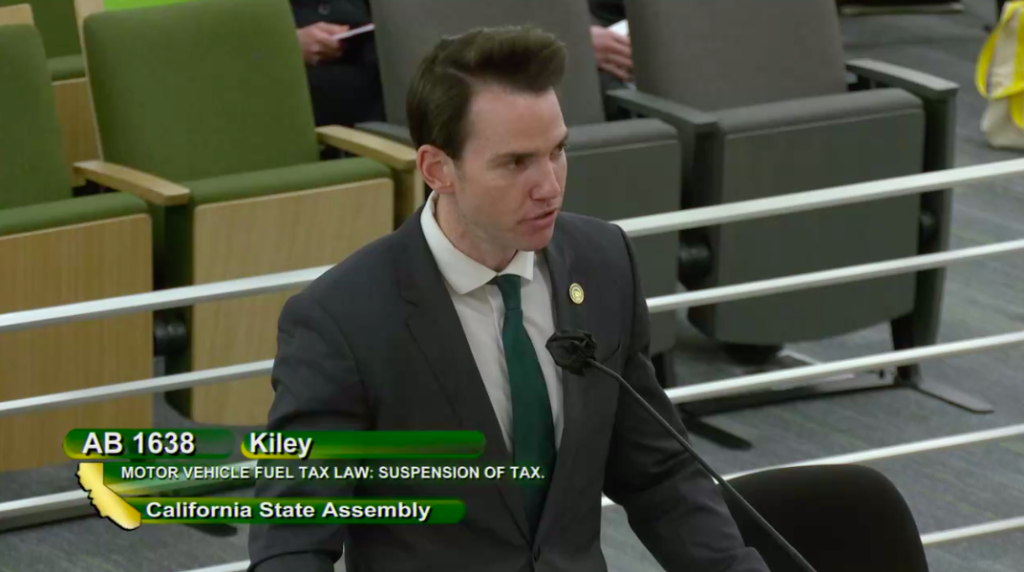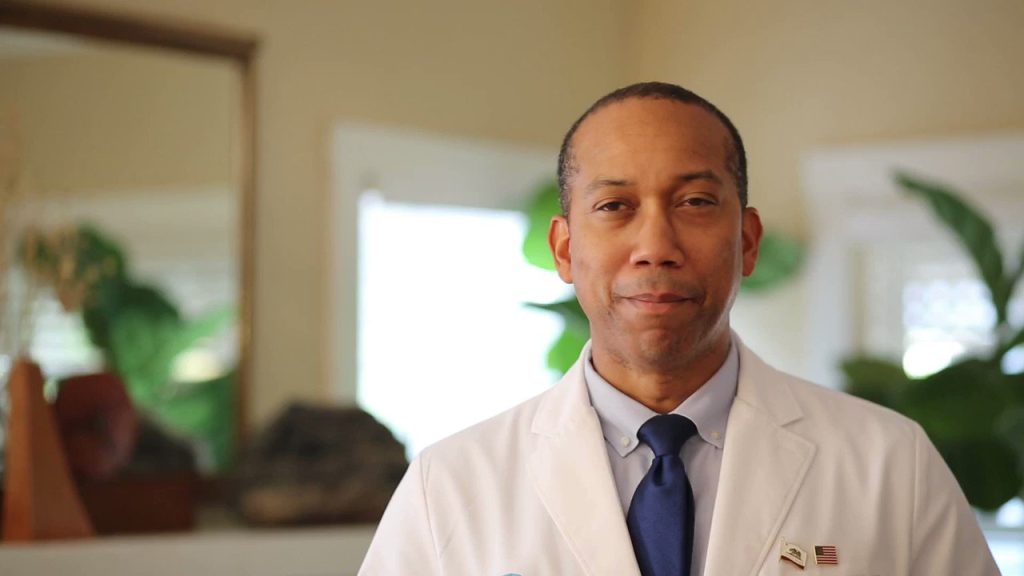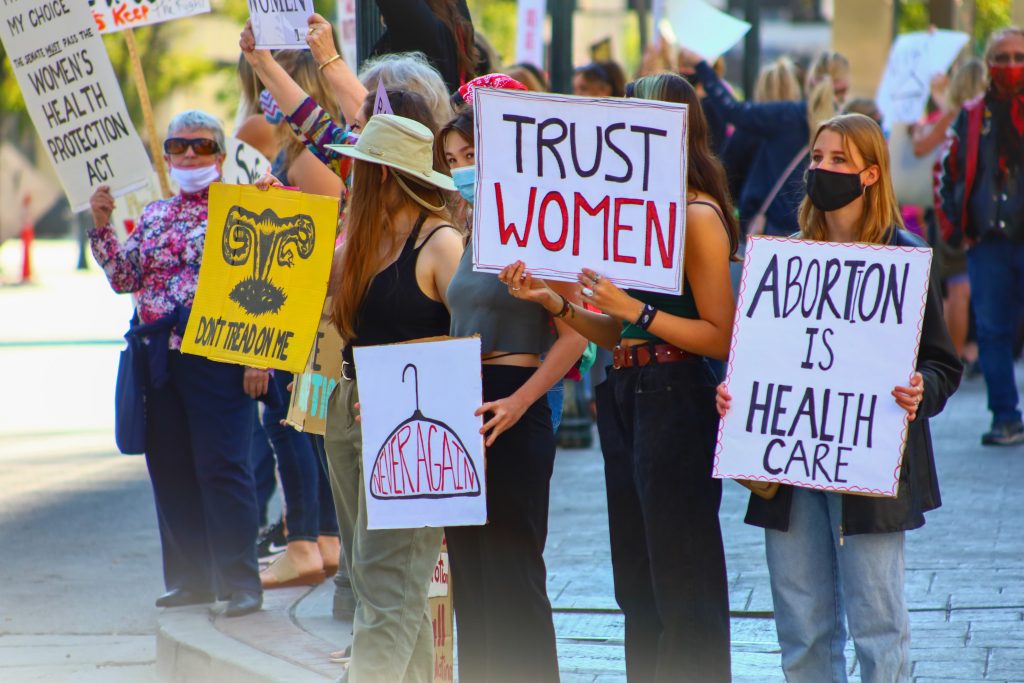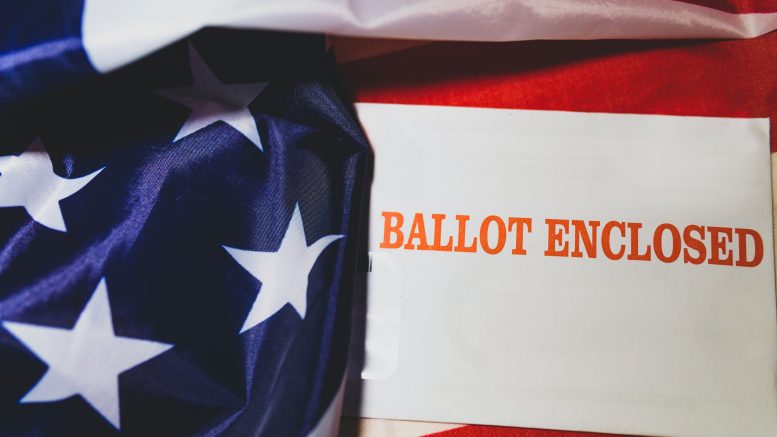By Jeff Burdick, SactoPolitco
This story was produced by the Sacramento-based political publication SactoPolitico and co-published here with permission.
To describe the CA-3 House race as the most competitive under-the-radar House race in the nation feels an understatement. Every normal indicator of a hot toss-up contest exists in this race, yet few California or national media have given it much of a second look. But consider:
It’s a rare open House seat with no built-in incumbent advantage.
In 2020, Trump would have won the reconfigured district by just 1.9%.
In the 2022 primary, CA-3 voters cast 235,732 ballots, or 10% more ballots than the next closest of California’s 52 House districts.
It’s the 6th most expensive competitive House race in California, with Republican Kevin Kiley and Democrat Dr. Kermit Jones raising a combined $5.5 million through Sept. 30 of this year.
It’s also the one of the most evenly funded with Jones ($2.77 million) outraising Kiley ($2.73 million) by just $40,000.
This all screams: TOSS-UP.
Yet national prognosticators – armed with no insider polling nor familiarity with either candidate or the district – have long presumed the seat to be a likely Republican win. Maybe this proves out and Kiley wins by 10 points, or maybe a variety of factors crash and allows a surprise win for Jones. Either way, the two candidates’ live TV debate on Thursday Oct. 27 will provide a last chance to everyone to look under the hood and compare the candidates side-by-side.
Late Money vs. Volunteer Power

Though the CA-3 has received little media attention, it is actually the largest House district in the state geographically. Nearly the size of West Virginia, it sprawls across 10 counties from up north in Plumas south to Death Valley in Inyo. This uniquely stretches the district across three distinct TV media markets: Sacramento, Reno/Lake Tahoe, and the far eastern edge of Los Angeles.
However, both campaigns have focused most of their advertising budgets in the Sacramento area as about 90% of CA-3 registered voters are reached by Sacramento TV outlets. And the majority of population lives in the suburban and exurban communities west and northwest of the state capitol. This includes the suburbs of Folsom, Orangevale, Rocklin and Roseville.
But an examination of both campaigns’ spending suggest two different homestretch strategies. Team Kiley looks focused mostly on a late surge of TV advertising, and the Kermit campaign appears to be focused un unleashing a carefully built ground game with some TV spend worked in.
According to advertising data provided to SactoPolitico, both campaigns have actually spent or reserved roughly the same amount in TV ads for the final two months of the campaign. From Sept. 13 to Nov. 8, this was $633,615 by the Jones team, with the Kiley camp spending slightly more at $679,745. However, team Kiley saved half of its ad spend for this week and next week; whereas the Jones camp invested most of its TV money earlier and currently has reserved no time this week and next. (Click for sample Jones TV ad and Kiley TV ad.)
This would appear a big late advantage for Kiley. That said, late fundraising is expected to allow the Jones campaign to get back on the air in the final 20 days, but as noted, the Jones campaign also made a long-term investment in building a stronger ground game. This includes roughly 1,000 volunteers, who have already knocked on 100,000 doors, and they are positioned to do more in the final weeks, as well as phone canvassing. In contrast, the Kiley campaign’s volunteer activities appear far more modest, with their main focus largely on “paid media” ad buys.
Interestingly, very little spending has occurred by outside groups, which in many competitive House races often eclipses spending by the campaigns themselves. These are known as “independent expenditures.” A search of the FEC filing database found just $81,000 in IE spent in support of Kiley and $50,000 in IE spent in favor of Kermit Jones so far.
Especially conspicuous by their absence has been no investment of resources by either of the respective campaign arms of the House Republicans (RNCC) and House Democrats (DCCC).
The DCCC silence in the race is especially notable as this week it dropped new ads in two other contested California House races. This was in support of Democrat Adam Gray efforts to win a Central Valley open seat by going after John Duarte, and in San Diego, a DCCC is going after GOP Brian Maryott to help incumbent Rep. Mike Levin. (See related story here on safe House Democrats sitting on more than $200 million in war chest funds, including more than $73 million held by 37 California House Democrats in safe seats.)
Hazy Numbers

Though Republicans and national prognosticators believe the race is Kiley’s to lose, the basic on-the-ground stats suggest far more uncertainty. This starts with voter registration stats. Republicans have a 5-point advantage with 38% of the district registered with the GOP and 33% as Democrats. However, this leaves a very large 29% registered with no party preference or as a third-party independent. With no independent polling in the race, that is a huge swath of voters potentially in play.
On the positive side for Kiley, Republicans like to point to the CA-3 primary results that showed a combined 55.8% of primary ballots voted for either Kiley or his Republican rival Sheriff Scott Jones. This left 44.2% voting mostly for Jones, with just 5% going for a random Democrat.
But directly extrapolating primary results to the general is always perilous, even in a district like the CA-3 that had a strong primary turnout. In the last midterm elections in 2018, the number of votes cast in California increased by 45% from primary to general election, and this cycle statewide, Democratic voters had very few competitive primary races to drive them to the polls. This included in in the CA-3.
To give a sense of Democrats’ relative under-participation in the 2020 primary, Gov. Newsom won 62% of the vote in 2018 and in the 2021 recall, but just nine months after the recall, he polled 6 points lower at 56%. This reflected not voter apathy or a lack of Democratic enthusiasm. After all, a record number of Californians still voted in the June primary, but with so many Democratic incumbents up and down the Democratic side of the primary ballot, there were few primary choices for Democratic voters and thus less extra interest.
So surely that 11 point GOP-to-Democrat vote gap in the CA-3 will narrow in the general election. The only question is by how much.
Also on the positive side for team Kiley, the district was a rare part of the state that voted “yes” to 2021 recall attempt of Gov. Newsom. Exact numbers for the newly redesigned CA-3 are not available, but it appears between 52-55% of recall voters in the district voted “yes” on the recall.
This, though, should be tempered by the fact we know some “yes” voters still voted for a Democratic replacement option. Plus, 8% of statewide Republicans who voted for the moderate GOP candidate former San Diego Mayor Kevin Falcouner as their preferred replacement option. Moderate Republicans like Falcouner are regularly reviled by Trump supporters as “RINOs” (Republicans In Name Only). How many of these Republicans exist in the CA-3? And how many might either not turn out to vote for the much more right-wing Kiley or vote for the moderate Democrat Jones? Both unknowns.
Dancing Around Trump

The Trump effect – both positive and, more likely, negative – is no minor issue if you are the Kiley camp, and they know it. Most Republicans nationwide are dealing the double-edge knife of having needed to embrace Donald Trump to prevail in GOP primaries, and now must carefully tack to the center to win over non-MAGA-loving moderates and independents, while being carefully not to dampen MAGA land’s turnout.
This is why Kiley actively pursued and lobbied Trump for his endorsement in the primary. But as seen in last week’s Fox 40 interview, Kiley now plays down that important endorsement by taking no position on whether he will endorse Trump for president in 2024. Kiley also avoided saying Joe Biden was legitimately elected president. Instead, Kiley said the electoral college finalized Biden’s victory, which is factually true but dodged whether he believes that electoral college vote had been tainted by fraudulently elected electors, which is at the heart of Trump’s election fraud conspiracy theories.
But give Kiley credit. This evasion was more crafty and did not elicit a follow-up question as happened with Kiley during his one primary debate appearance when he gave the Clintonian answer, “It depends what you mean by legitimate” but then suggested that the 2020 election system was “tarnished.” That elicited a follow-up question for him to clearly state whether Biden was legitimately elected, but he again evaded.
On his website, Kiley also refers to Trump not as “former President Trump,” but as “President Donald Trump.” This is in contrast with how his site lists every other out-of-office politician who has endorsed Kiley. For example, immediately beneath the Trump endorsement is “Governor Pete Wilson (ret.).” Former Roseville Mayor John Allard who like Trump left office after 2020 is also listed as “ret.”
This kind of straddling reflects Kiley’s bind. He needs to keep MAGA voters enthused to turn out, but he knows he can’t be too precise or turn off key moderate and independent voters.
Cultivating the GOP’s radical base also appears to be the calculation Kiley made when he agree to serve as a featured speaker at a March 2021 rally in front of the state capitol that was co-organized by an individual who had recently called for Americans to arm for civil war following Jan. 6. Kiley spoke before and after other speakers with well-reported connections to a national hate group, QAnon and militias. He bathed in the crowd’s applause that day and stayed to sign books underneath his own pop-up merch tent (left).
Since then, Kiley has avoided most questions about that speaking appearance and has limited many public availabilities where he might be asked about this and other challenging topics. He would not speak to the Sacramento Bee editorial board before the primary, and he attended only one of multiple primary debates forums. SactoPolitico’s many requests for interviews have also gone without response, and we were told multiple “meet the candidate” events were closed to the media.
Critical Abortion Effect?

The end of any close election inevitably becomes all about turnout, and the biggest wild card nationwide is how big of an effect will be played by the U.S. Supreme Court’s Dobbs decision that overturned Roe v. Wade abortion rights. If Dr. Jones prevails, his camp believes his pro-choice position will be decisive.
One source close to the Jones campaign said polling shows 60% of CA-3 voters oppose the Dobbs decision, and 51% strongly opposed it. Further, 78% of CA-3 voters reported they won’t vote for a politician who wants to ban all abortions.
This is why the Jones camp has gone so hard on abortion rights. It also appears why Kiley straddles this issue as carefully as he has his Trump endorsement. His campaign insists he is pro-life but also that he supports exceptions for rape, incest and health of the mother.
The Jones camp regularly notes all of the state abortion right bills Kiley has voted against. This included the bill to put Proposition 1 on this year’s ballot to enshrine a women’s right to choose in the state constitution. Kiley opposed this while his campaign consultant Dave Gilliard told the Sac Bee that Kiley also supports giving “voters and Legislatures in the individual states [the right] to decide.” Confusing? Yes.
At the same time, Kiley less effectively tries to claim Jones has a radical position on abortion that is out of step with most in the CA-3 and the state. This Kiley claims despite expectations Proposition 1 will pass easily. Still, yet to be seen is how important will the issue be for CA-3 voters and whether it moves enough votes – in combination with other factors – to overcome that small but significant Republican registration advantage.
EDITOR’s NOTE: The Kiley campaign was contacted to give its perspective on the stretch run, but did not respond. To link to SactoPolitico’s extensive past coverage of this House race, click here.



Be the first to comment on "Analysis: In red-hot Jones-Kiley CA-3 House race, does anyone have homestretch advantage?"